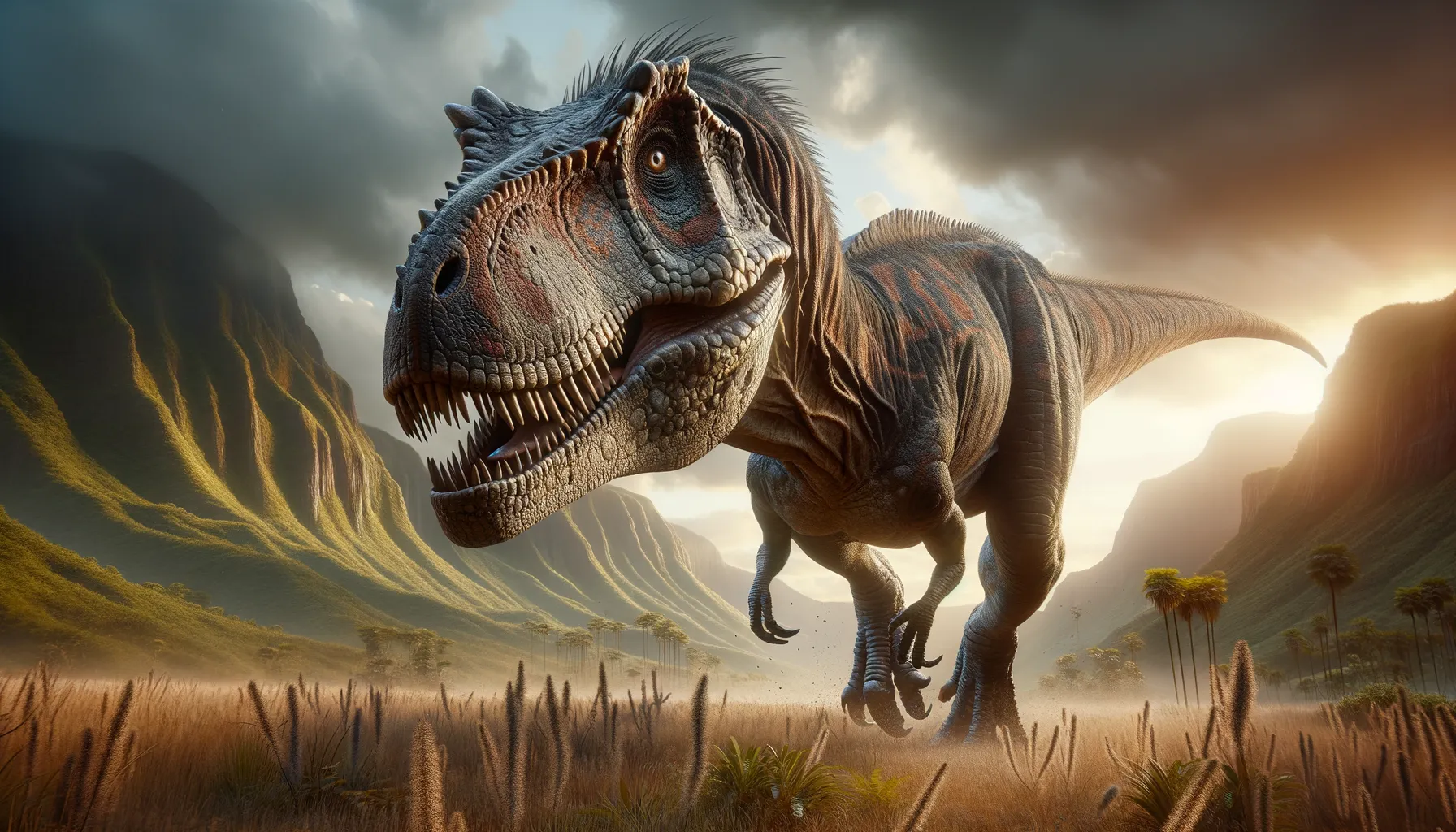
Skorpiovenator
Fierce predator of prehistoric Argentina.
Period
Cretaceous
Length
Around 6 meters long.
Height
About 2.5 meters tall at the hips.
Weight
Approximately 1,200 kg.
Skorpiovenator was a robust theropod dinosaur that thrived during the Late Cretaceous period in what is now South America. Known for its distinctive skull and sharp teeth, it was a formidable predator in its ecosystem. The discovery of this dinosaur added significant insight into the diversity of theropod dinosaurs in the region, showcasing its unique adaptations for hunting and survival.
Diet
Skorpiovenator was carnivorous, largely preying on smaller herbivorous dinosaurs and possibly scavenging when necessary. Its sharp teeth and strong build suggest it was well-equipped for a voracious diet high in protein.
Hunting
This dinosaur likely used stealth and short, powerful bursts of speed to ambush prey. It had strong jaws and sharp teeth to deal with its catches efficiently, ensuring it could tackle tougher prey as well.
Environmental challenges
Skorpiovenator faced numerous environmental challenges, including competition for food with other large predators of its time. Changing climates may have also impacted vegetation and prey availability sporadically. It would have needed to adapt to these shifts to maintain its role as a top predator. Periodic droughts and floods could alter the landscape, influencing its hunting and migratory habits.
Speed
Moderate, adapted for bursts when needed.
Lifespan
Estimated at 20-30 years.
First discovery
First discovered in Argentina in 2008.
Fun Facts
- Skorpiovenator, whose name means 'Scorpion Hunter', was a meat-eating dinosaur that roamed South America around 95 million years ago.
- This dinosaur was about 21 feet long, making it a medium-sized predator for its time.
- Skorpiovenator had short arms compared to its large head filled with sharp teeth, a classic trait of theropod dinosaurs.
- It was discovered in Argentina, a country well-known for its rich dinosaur fossil beds.
- With its scorpion-inspired name, Skorpiovenator is part of the abelisaurid family, a group of predators known for their peculiar skull shapes.
- Paleontologists found the Skorpiovenator's remains in 2008, and it quickly became a fascinating subject for researchers.
- The dinosaur's skin may have been covered in tiny bumps or scales, as suggested by the bone structure.
Growth and Development
Like many theropods, Skorpiovenator would have hatched from eggs and grown relatively quickly to avoid predation. Rapid juvenile growth would be critical for survival, reaching nearly full size within its first decade. This growth required abundant resources, driving competitive behavior early in life.
Habitat
Skorpiovenator inhabited lush plains, interspersed with forests where it could hide and stalk prey. The region featured a warm climate, supporting a diverse array of potential food sources. Rivers and water sources in the area provided necessary hydration and attracted herbivorous prey.
Interaction with other species
Skorpiovenator would have interacted with numerous other species, both prey and competitors. It needed to compete with similarly sized theropods and smaller predators for food. It may have avoided direct confrontations with larger predators by hunting in less contested areas or different times.
Natural lifespan
Its natural lifespan was likely around 20-30 years.
Reproduction
Reproduction would involve laying eggs in safe, concealed nests, likely guarded carefully from predators. Parental care may have extended beyond hatching, offering protection until juveniles were self-sufficient. Clutch sizes could vary, possibly dictated by environmental conditions.
Social behaviour
While primarily solitary, there may have been instances where Skorpiovenator tolerated others of its kind, especially in regions with abundant food. Juvenile dinosaurs may have formed small, temporary groups for protection. Communication between individuals could include vocalizations and physical displays.
Fossil locations
Fossils of Skorpiovenator have been primarily found in the Huincul Formation of Argentina, offering a rich context for its role in the ecosystem. These findings help researchers establish connections and differences with other theropods in the region. The quality and number of fossils provide insights into its physiology and behaviors.
